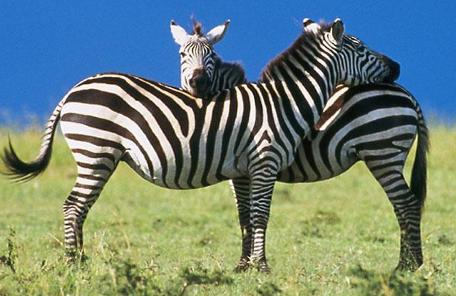


|
Perissodactyla:
The odd-toed ungulates are browsing and grazing mammals that comprise the order Perissodactyla. They are odd-toed ungulates (animals having an odd number of toes on the hooves), are usually large to very large, and have relatively simple stomachs and a large middle toe. Evolution:
The odd-toed ungulates arose in what is now North America in the late Paleocene, less than 10 million years after the Cretaceous-Tertiary extinction event, in which the dinosaurs died out. By the start of the Eocene (55 million years ago) they had diversified and spread out to occupy several continents. The horses and tapirs both evolved in North America; the rhinoceroses appear to have developed in Asia from tapir-like animals and then reinvaded the Americas during the middle Eocene (about 45 million years ago). There were 12 families, of which only three survive. These families were very diverse in form and size; they included the enormous brontotheres and the bizarre chalicotheres. The largest perissodactyl, an Asian rhinoceros called Paraceratherium, reached 12 tons, more than twice the weight of an elephant. Perissodactyls were the dominant group of large terrestrial browsers right through the Oligocene. However, the rise of grasses in the Miocene (about 20 million years ago) saw a major change: the even-toed ungulates with their more complex stomachs were better able to adapt to a coarse, low-nutrition diet, and soon rose to prominence. Nevertheless, many odd-toed species survived and prospered until the late Pleistocene (about 10,000 years ago) when they faced the pressure of human hunting and habitat change. Taxonomy:
The members of the order fall into two suborders: Hippomorpha are odd-toed ungulates that are fast runners with long legs and have only one toe; this suborder has the sole family Equidae (coextensive with the genus Equus), comprising the horse, zebra, donkey, onager, and allied species. Ceratomorpha are odd-toed ungulates that have several functional toes and are heavier than and move slower than the Hippomorpha species. This suborder has two families: Tapiridae (tapirs) and Rhinocerotidae (rhinoceroses). |
